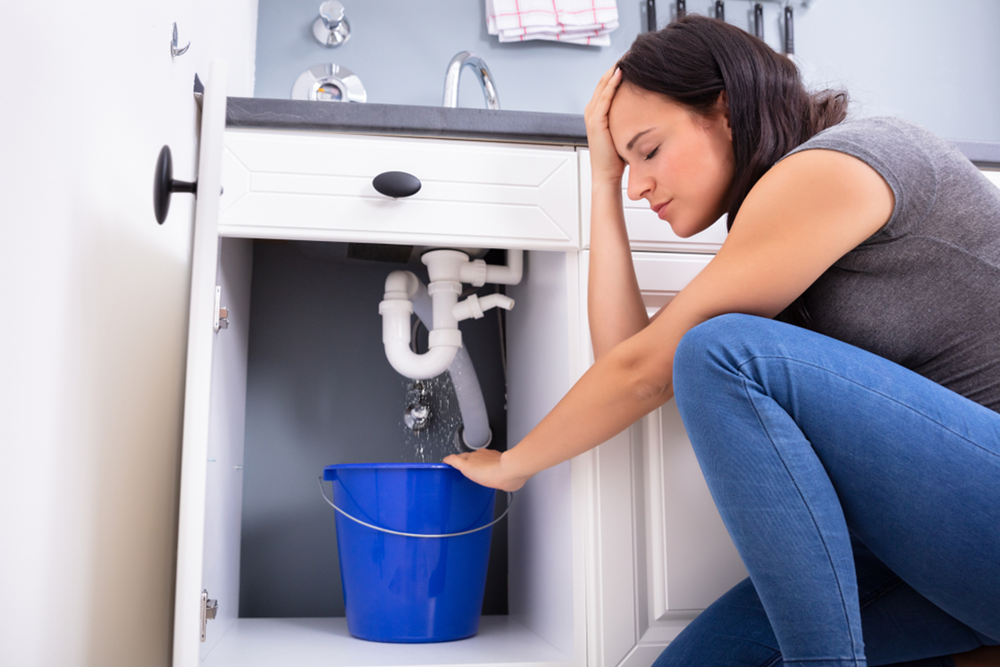Straightforward Instructions for Repairing a Leaky Waste Disposal
Straightforward Instructions for Repairing a Leaky Waste Disposal
Blog Article
The writer is making a number of good points relating to Garbage Disposal Leaking From Bottom as a whole in this article which follows.

Garbage disposals are vital cooking area appliances that assist in dealing with food waste effectively. Nonetheless, a dripping waste disposal unit can be a frustrating and untidy issue to take care of. Luckily, several leakages can be dealt with conveniently with a couple of straightforward actions. In this article, we will talk about how to take care of a leaking waste disposal unit properly.
Introduction
Garbage disposals are mounted under kitchen sinks and are made to shred food waste into smaller items, allowing it to go through the pipes system quickly. While these tools are generally trusted, leakages can occur in time because of deterioration, loosened links, or damages to the device.
Step-by-Step Overview to Fixing a Dripping Garbage Disposal
Turn Off the Power
Prior to trying any kind of fixings, make certain that the power to the waste disposal unit system is switched off to avoid the danger of electric shock.
Situate the Leakage
Determine the exact location of the leakage and identify the cause
Tighten Links
Utilize a wrench to tighten any kind of loose connections between the disposal system and the pipes system.
Replace Seals or Gaskets
If the leak results from worn seals or gaskets, remove the old components and replace them with new ones.
Patching Cracks or Holes
For cracks or holes in the disposal unit, use epoxy or a suitable patching material to seal the damaged area.
Identifying the Resource of the Leakage
Prior to attempting to repair a leaking garbage disposal, it is essential to recognize the resource of the leak. This can generally be done via visual examination or by conducting straightforward examinations.
Visual Assessment
Inspect the garbage disposal device meticulously for any kind of indicators of water leak. Pay attention to locations around seals, gaskets, and link factors.
Checking for Leakages
One means to examine for leakages is by running water with the disposal unit and looking for any kind of visible signs of leak.
Typical Sources Of Leaks in Trash Disposals
Worn Seals and Gaskets
Seals and gaskets play an essential duty in stopping water from leaking out of the waste disposal unit. In time, these parts can weaken, leading to leaks around the disposal device.
Loose Connections
The links in between the garbage disposal and the pipes system can come to be loose gradually, creating water to leak out throughout operation.
Fractures or Openings in the Disposal Device
Physical damages to the garbage disposal, such as fractures or openings in the housing, can likewise lead to leaks.
Devices and Products Needed for Taking Care Of a Leaking Garbage Disposal
Before beginning the repair process, collect the needed tools and materials, consisting of a screwdriver, adjustable wrench, plumbing's putty, replacement seals or gaskets, and epoxy or patching product for repairing cracks or openings.
Evaluating the Garbage Disposal After Repair Service
When the repair is full, check the garbage disposal by running water with it to make certain that the leak has actually been dealt with.
Preventive Maintenance Tips to Avoid Future Leakages
To avoid future leakages, it is essential to execute routine upkeep on your waste disposal unit. This includes maintaining it clean, preventing placing non-food products or tough items down the disposal, and periodically looking for leakages or other problems.
Verdict
In conclusion, taking care of a dripping garbage disposal is a fairly simple procedure that can be finished with standard devices and materials. By following the steps described in this post and exercising preventative upkeep, you can maintain your waste disposal unit in good working problem and stay clear of pricey fixings in the future.
HERE’S HOW TO FIX YOUR GARBAGE DISPOSAL
WHAT TO DO IF SOMETHING IS STUCK IN YOUR GARBAGE DISPOSAL
If the impeller won’t turn, there’s probably something stuck in the disposal. It could be a steak bone or peach pit, although plumbers report pulling all sorts of inappropriate objects out of disposals, such as bottle caps or aluminum foil. Make sure power to the disposal is off, and look inside to see if you can see the source of the jam.
Never stick your fingers in a disposal. Pull out anything you see with tongs or pliers.
If the disposal still won’t work, it may be time to call a plumber or consider buying a new disposal. GEM Plumbing & Heating is here for all of your garbage disposal needs.
WHAT TO DO IF YOUR GARBAGE DISPOSAL DRAIN IS CLOGGED
Take everything out from underneath your sink and put a bucket or other container under your disposal to catch any water that drains out. Disconnect your disposal from the power supply. If it’s plugged into a wall outlet, unplug it. If it’s hardwired into an electrical box, go to the electrical panel and turn off the breaker for the disposal. Pour ¼ cup of baking soda into the drain, followed by ½ cup of white vinegar. Give the solution a few minutes to fizz and do its work. Look into the disposal with a flashlight to see if you can see an object that might be causing the clog. If you see it, remove it using tongs or pliers. MORE TIPS ON DEALING WITH A CLOGGED GARBAGE DISPOSAL
Never use drain cleaner in a garbage disposal. It can damage the plastic parts inside the disposal. You can also be splashed with the caustic liquid while working to clear the clog. Beware! Never stick your fingers into a garbage disposal. Trust us — not a good idea. In many instances, your dishwasher drains through your garbage disposal. This allows the disposal to grind any large food particles that may be drained out of your dishwasher. There are some jurisdictions, however, where the plumbing code prohibits such a connection. WHAT TO DO WHEN YOUR DISHWASHER DRAINS THROUGH THE DISPOSAL
Run some water in the sink so your plunger has at least a ½-inch of water to create a seal and plunge vigorously up and down several times. You may need to repeat this several times. Run hot water down the drain to clear any residue that remains.

I was introduced to that write-up about Why Is from an acquaintance on our other site. Kindly take the time to distribute this write-up if you appreciated it. Bless you for your time. Kindly come visit our blog back soon.
Click Here Report this page